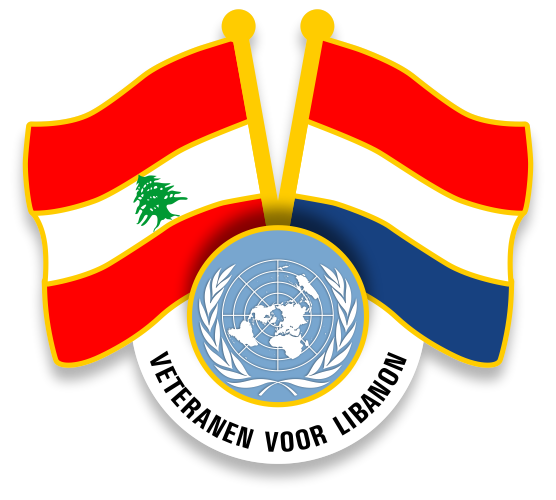
44 Mechanised Infantry Battalion (44 MechInfBn) - Regiment Infantry Prince Johan Willem Friso
The Regiment Infantry Prince Johan Willem Friso is a Dutch Infantry Regiment and also the oldest Infantry Regiment of the Royal Netherlands Army.
The Regiment is named after the Frisian Stadtholder and military commander (General) Prince Johan Willem Friso van Nassau-Dietz (14 August 1687 - 14 July 1711).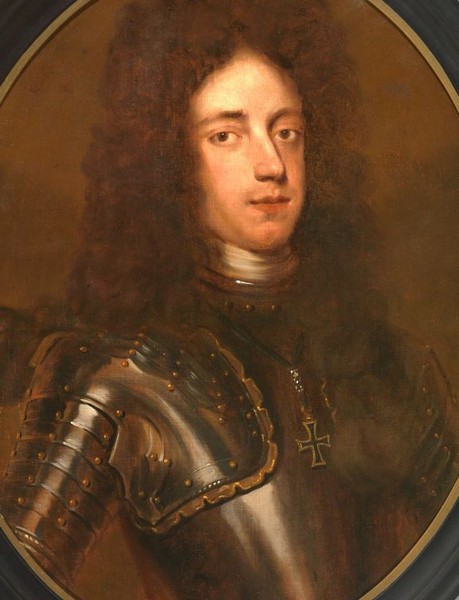
Formation: 30 August 1577 (as 'Regiment Rennenberg'); 28 October 1813 ('1st Battalion of the Dutch Legion of Orange'); and the resulting 9th RI; 1 July 1950 (as 'Regiment Infanterie Johan Willem Friso').
Both RI were stationed in Assen and Leeuwarden hence the name after the stadtholder of Friesland, Groningen and Drenthe: Johan Willem Friso.
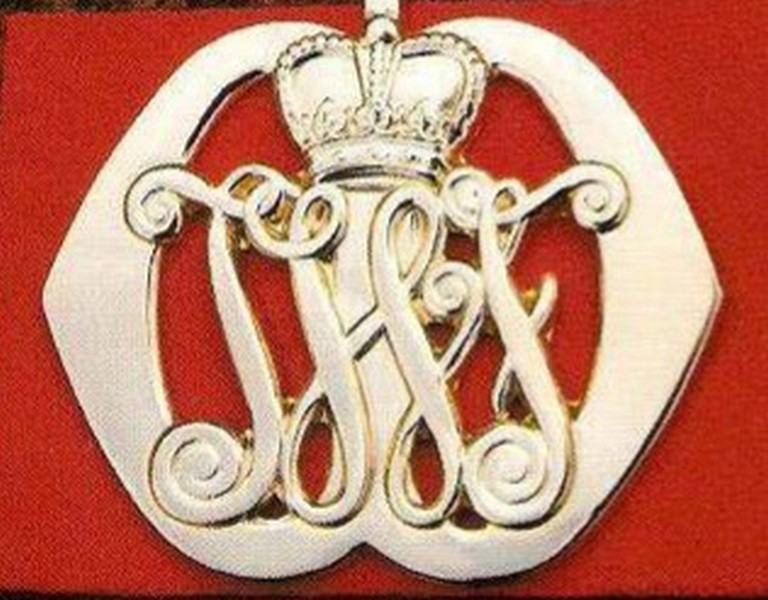 Beret emblem JWF
Beret emblem JWF
The latter was done in response to a Royal Decree that regulated the peace composition of the Royal Netherlands Army. On 8 October 1951,
Her Majesty Queen Juliana presented the Colours to the then Regimental Commander, Colonel E. Lindeboom.
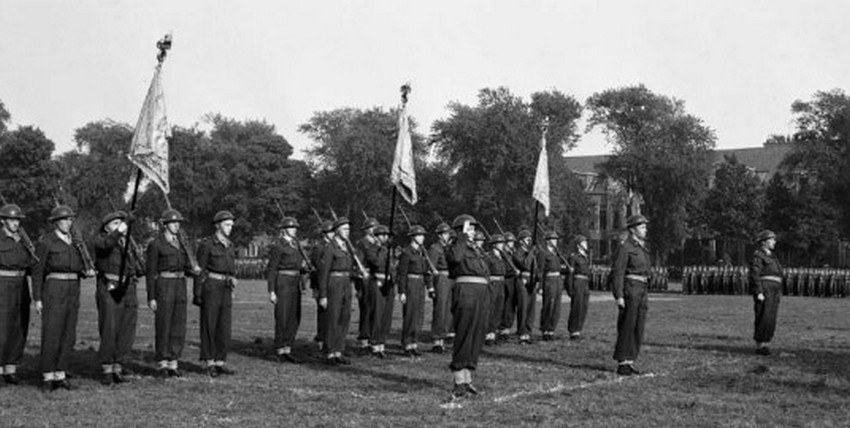 Banner presentation 8 October 1951
Banner presentation 8 October 1951
On 18 July 1957, the battalion was renamed ‘44th Battalion Infantry’, and in 1960 it was again renamed to ‘44 Mechanised Infantry Battalion’ (44 MechInfBn RI JWF).
In 1966, the battalion was equipped with the YP 408 armoured wheeled vehicle, and in the course of 1987 the YP408 was replaced by the (tracked) YPR765.
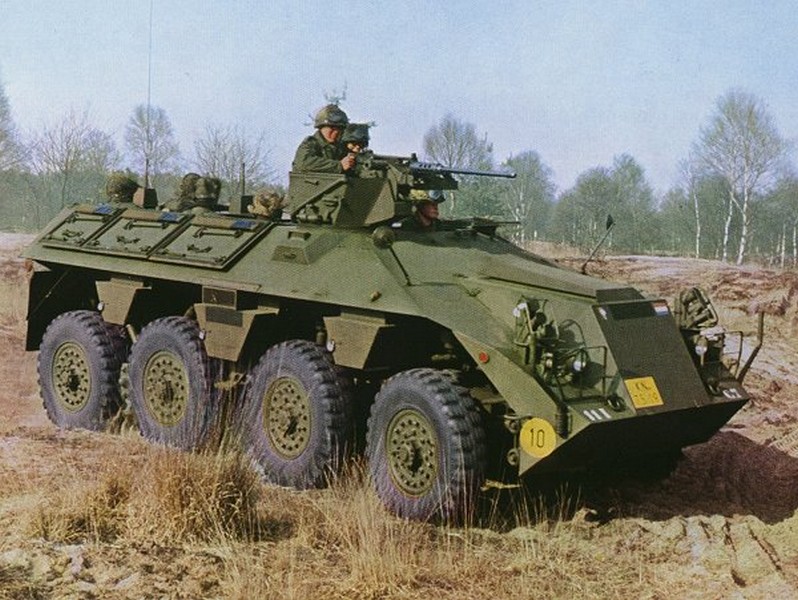
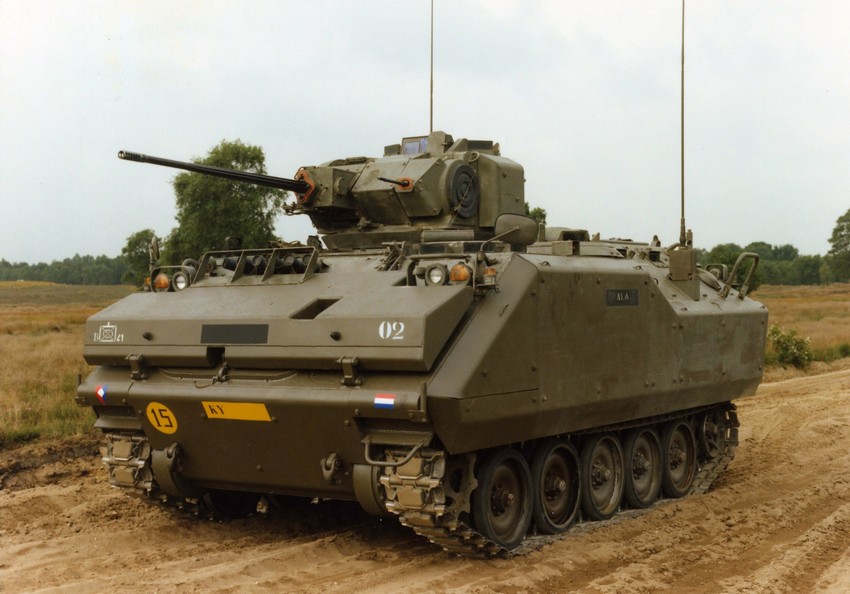
YP408 YPR 765
At the beginning of 2009, a new infantry fighting vehicle was introduced to 44 MechInfBn: the tracked (Swedish) CV90.
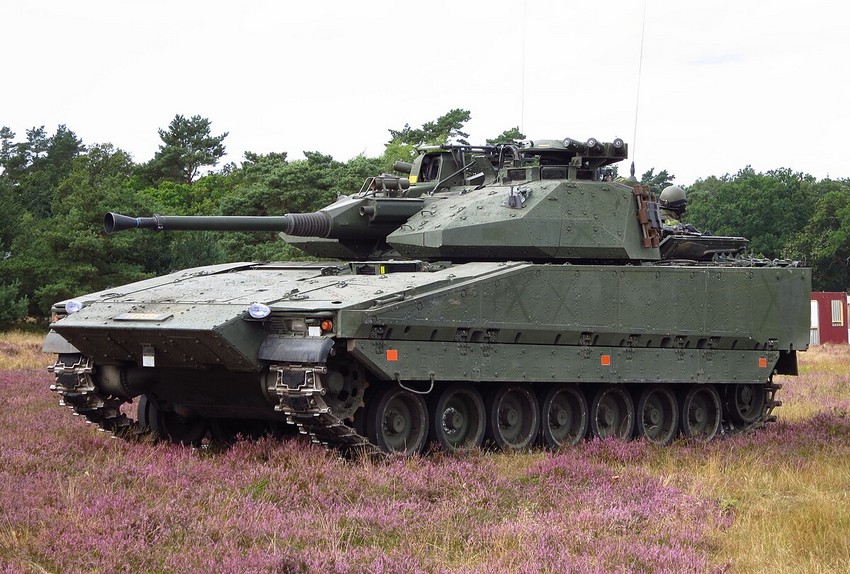 CV90
CV90
Battalion horse and mascot: On 7 November 1964, the battalion received the Friesian studbook foal Abe from the board of the annual traditional horse market in Zuidlaren (Drenthe).
It was a gift as a thank you for the good relationships between the unit and the municipality. The battalion had been stationed at the Adolf van Nassau barracks in Zuidlaren since 5 June 1953.
It was no coincidence that the board choose this particular gift. For one, the black horse is also depicted in the municipal Coat of Arms of Zuidlaren.
Following the presentation of Abe, a few conditions had to be met by the unit.
The battalion had to sell the animal again the following year at the Zuidlaren horse market and buy again a new foal at the market.
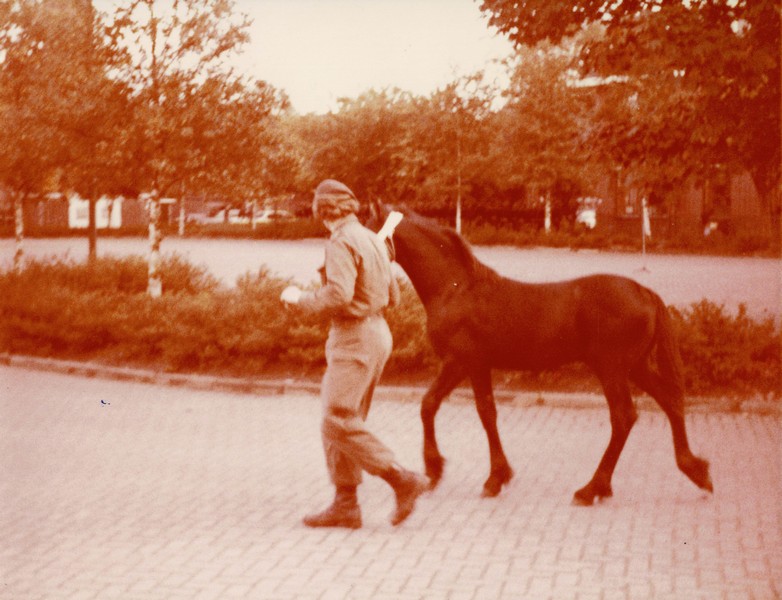
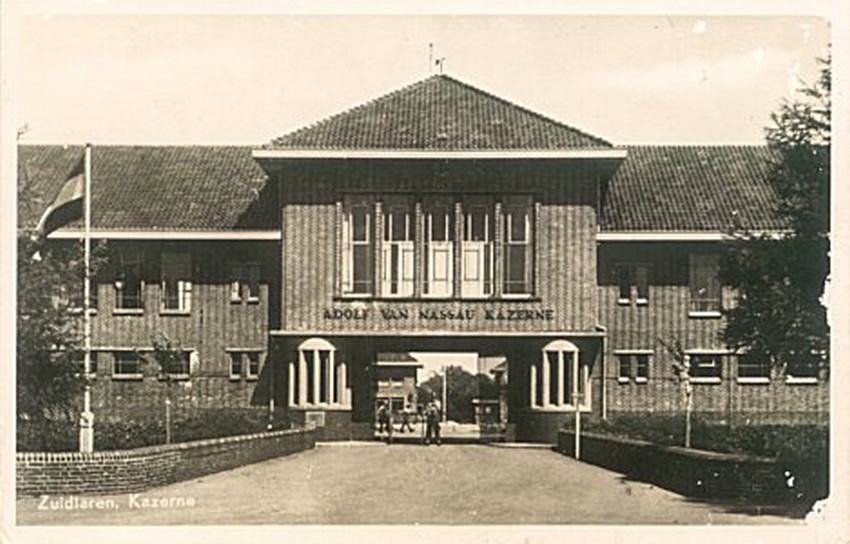
Friesian Foal October 1978 Adolf van Nassau barracks - Zuidlaren
The money that remained after the purchase was intended for the feeding and care of the animal at the barracks.
The Adolf van Nassau barracks had an animal farm on its grounds that had been purchased during an earlier extension of the barracks.
The foal spent the nights in the stable of this farm.
Every morning at the battalion roll call (at 07:00 hours) the foal was at the roll call place.
After roll call, one of his regular caretakers then led the foal to a meadow behind the barracks.
There it spent the day among the other horses, until the final roll call at 17.00 hours.
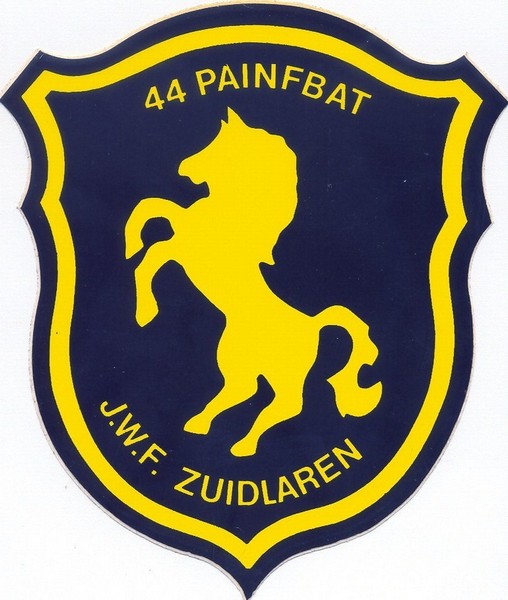
United Nations: On 24 September 1963, the Dutch government, through then Minister of Foreign Affairs Luns, made troops available to the United Nations.
This offer included a contribution from all three branches of the Armed Forces: 44 MechInfBn, a Medical company and a platoon of the Royal Military Police.
From January 1966 onwards, the soldiers assigned to 44 MechInfBn had to be ready for deployment within a month.
From 1975 onwards, the infantrymen from Zuidlaren wore the blue 'Lebanon cord' on their uniforms after the completion of the training programme.
This blue 'Lebanon cord' symbolized the availability for UN missions.
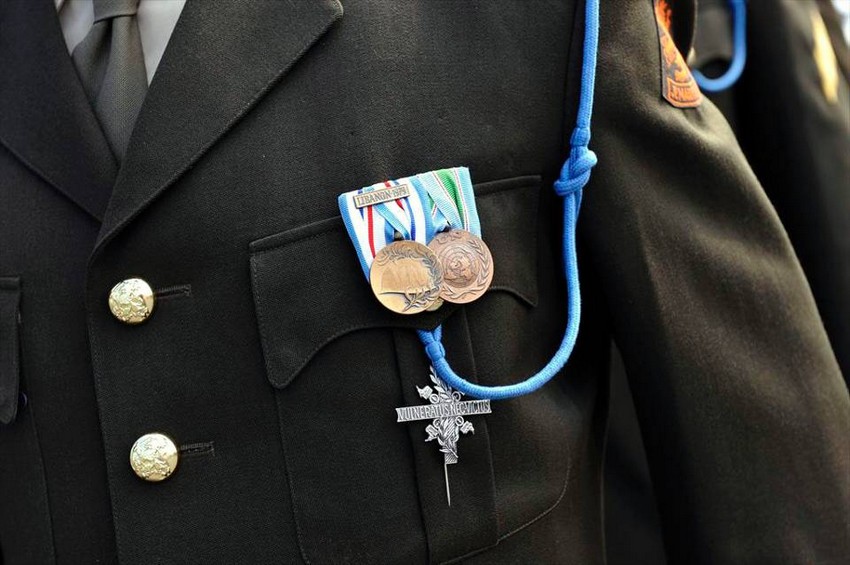
Lebanon: On 19 December 1978, the President of the UN, Kurt Waldheim, requested the Dutch government to make troops available for a UN peacekeeping force in Lebanon: UNIFIL.
On 12 January 1979 the Dutch government agreed to this request.
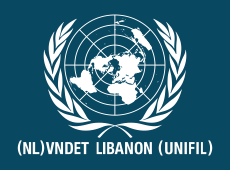
From 1979 to 1985, more than 9.000 Dutch military, mostly conscripts, contributed to the ‘United Nations Interim Forces In Lebanon’ (UNIFIL).
On 25 February 1979, 74 quartermasters left for the Lebanon, the main force left on 10 March 1979.
The soldiers were deployed in the south of the Lebanon under the name ‘Dutchbatt’ (Dutch Infantry Battalion).
On 30 September 1983, the Dutch contribution was reduced to the size of a company: ‘Dutchcoy’ (Dutch Infantry Company)
On 6 November 1985, the last Dutch UNIFIL soldiers left the Lebanon.
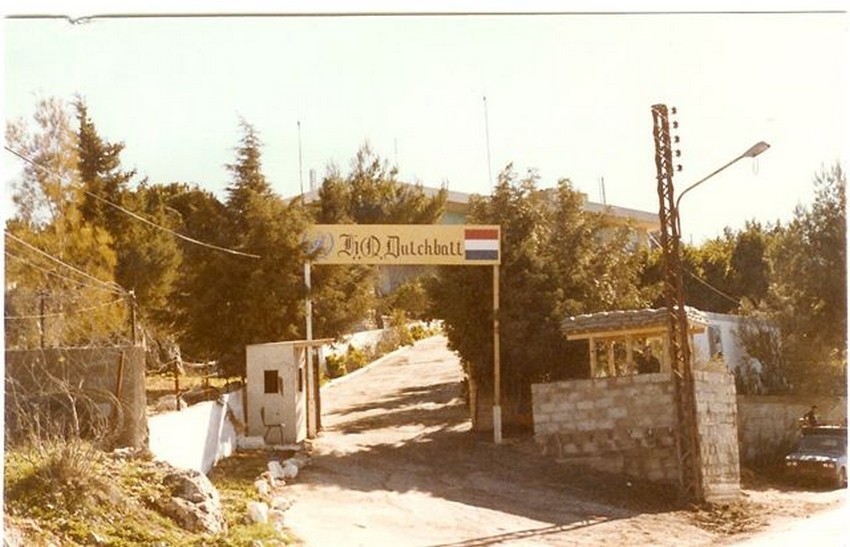
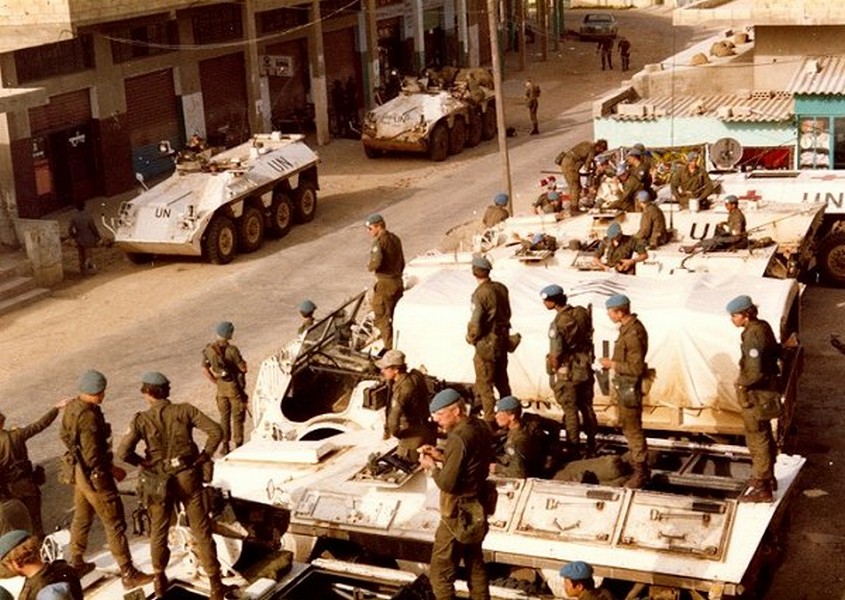
HQ Dutchbatt July 1979 Haris Village Square - Haris Rapid Force to Irish area 18-04-1979
Disbandment: As a result of the end of the Cold War, the Royal Netherlands Army was greatly reduced in size in the 1990s. Conscription was suspended and many units were disbanded. 44 MechInfBn was among those units. On 16 April 1992 at the Brink in Zuidlaren, in front of the local population, 44 MechInfBn JWF was disbanded and the Adolf van Nassau barracks in Zuidlaren were closed.
The traditions of 44 MechInfBn were taken over by 43 Mechanised Brigade (MechBde) in Assen, which was also disbanded shortly afterwards. By Royal Decree of 29 July 1994, the Regiment was formally disbanded; the traditions, the Lebanon monument and regimental collection were moved to the Infantry Museum in the Harskamp.
Due to the instability that arose in the world and the outbreak of small-scale conflicts, including in the former Yugoslavia, the Dutch government decided to again actively participate in peacekeeping operations.
As a result, more Dutch troops were sent abroad.
Re-establishment: The active component of the Royal Netherlands Army was therefore reorganised and expanded. In Havelte (Drenthe), a Mechanised Brigade (43 MechBde) was (re)established, which would also include an armoured infantry battalion. This newly established battalion took over the traditions of the Infantry Regiment Johan Willem Friso.
In December 1997, the battalion was re-established and on 1 July 199 it was renamed ‘44 Mechanised Infantry Battalion Regiment Infantry Johan Willem Friso’ (44 MechInfBn RI JWF). With this re-establishment, the tradition of the battalion horse was also revived.
On special occasions, the Friesian studbook horse is present in a regimental outfit.
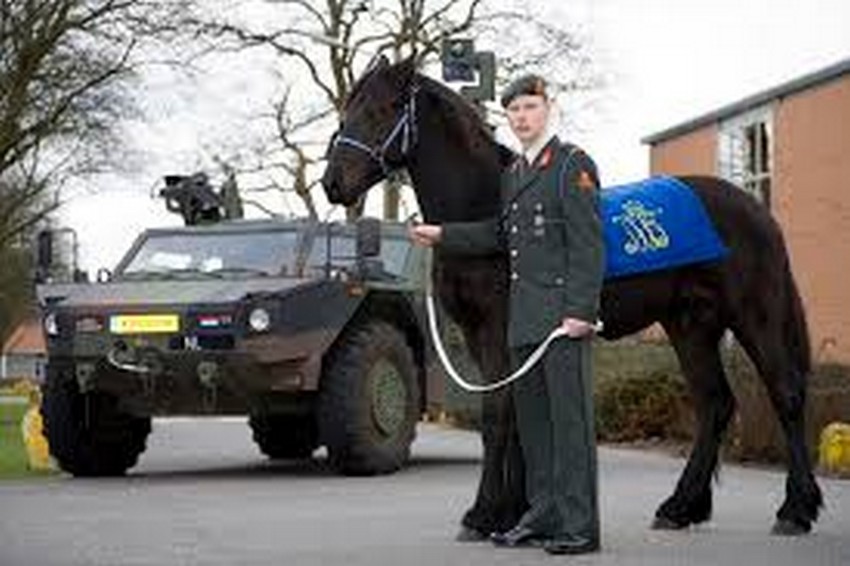
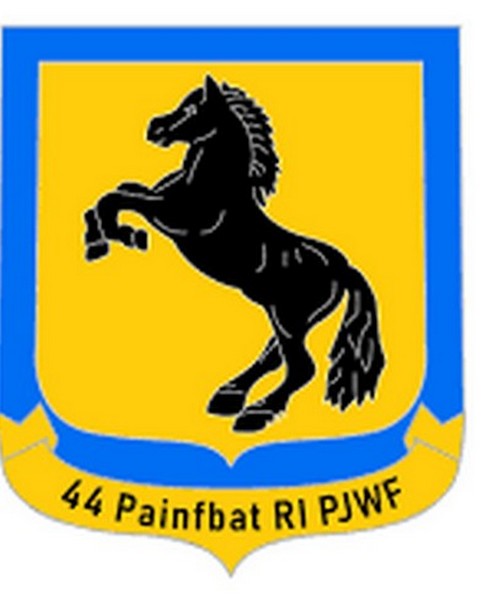
On 1 July 1999, the commander of the Royal Netherlands Army, Lieutenant General Schouten, handed over the Colours to the new Regimental Commander, Lieutenant Colonel Maijers, also Commander of 44 MechInfBn RI JWF.
As of 20 November 2020, the princely title has been added to the name of the Infantry Regiment Johan Willem Friso by Royal Decree, as a result of which the regiment will be referred to as Infantry Regiment Prince Johan Willem Friso from this date. (44 MechInfBn RI PJWF)
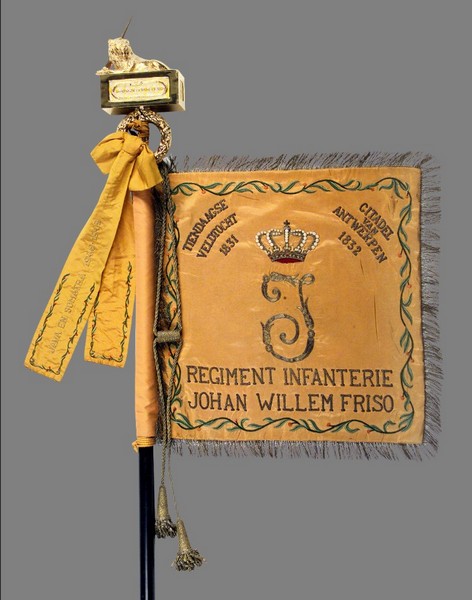
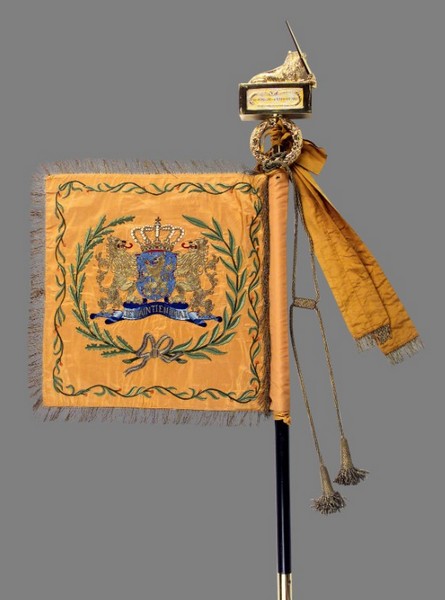
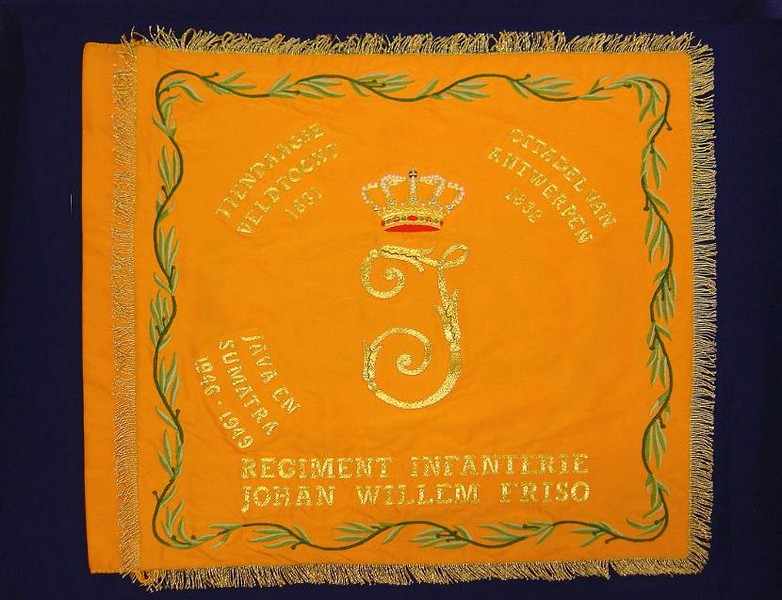
The inscriptions on the Regimental Colours are:
- Ten Days Campaign 1831
- Citadel of Antwerp 1832
- Java and Sumatra 1946-1949
- North Kandahar and Uruzgan 2006 (added in 2022)
After the re-establishment of 44 Mechanised Infantry Battalion RI JWF in 1999, the battalion staff paid a lot of attention to cultivating a Regimental ‘esprit de corps’.
The UNIFIL past and the strengthening of ties with the approximately 9.000 UNIFIL veterans played a major role in this.
Important in this context was also the reintroduction of the blue lanyard in 2003.
Exercise Blue cord: Actively serving Regimental members will only receive the blue 'Lebanon cord' after they have successfully completed the Blue 'Lebanon cord' exercise.
In doing so, they must demonstrate their physical and mental abilities. They must also show that they have sufficient knowledge of the traditions of the regiment and their predecessors.
New members will be presented with the blue 'Lebanon cord' by a UNIFIL veteran.
The JWF Monument: In 1983, a Monument was unveiled at the Adolf van Nassau barracks in Zuidlaren.
The monument held a plaque with the names of the 9 Dutch UNIFIL soldiers who were killed during the mission.
After the battalion was disbanded, the monument was relocated to the Johan Willem Friso barracks in Assen.
Since the re-establishment of the Regiment in 1999, the monument has been located at the Johannes Post barracks in Havelte.
Behind the memorial stone, initially a white and a green YP 408 were placed. At the unveiling, the commander of the Royal Netherlands Army, Lieutenant General Schouten, donated a bust of Prince Johan Willem Friso to the regiment. In 2009, the monument at the Johannes Post barracks was given the name 'JWF monument'.
It gradually took on a more general character as a place of remembrance for all the fallen of the Regiment.
Dutch Remembrance Day takes place annually on 4 May.
Several plaques on the monument now bear the names of:
The war volunteers of the Battalion 'Friesland' (1-9 RI) and the Battalion 'Drenthe' (1-1 RI) who died during the deployment in the Dutch East Indies;
The deceased UNIFIL soldiers;
The Regimental members who died in Uruzgan.
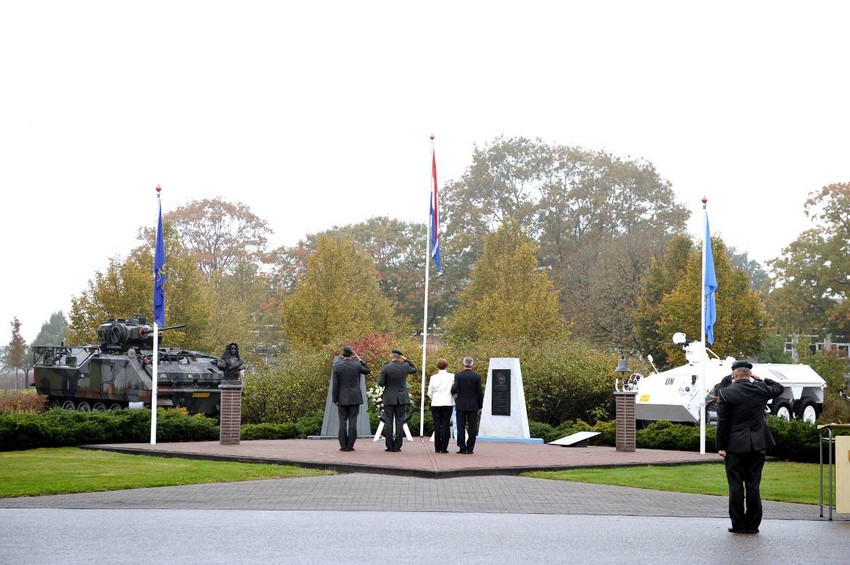 A YPR 765 replaced the green YP 408 after the introduction of the CV90.
A YPR 765 replaced the green YP 408 after the introduction of the CV90.
As the VVL foundation, we are committed to the residents of Lebanon who desperately need our help.
Would you like to help us with that?
Then transfer your contribution to bank account number
NL71 ABNA 0118 7463 91 in the name of VVL Veteranen Libanon
Your donation will 100% benefit our causes.
On behalf of the people of Lebanon, thank you very much for your contribution!
